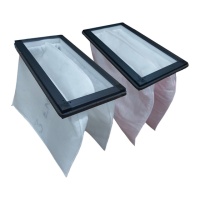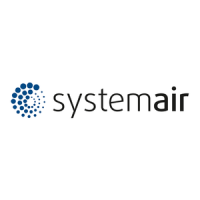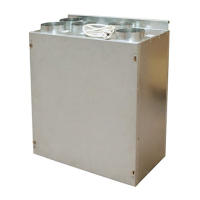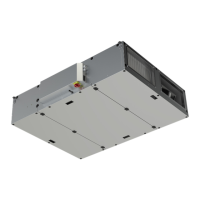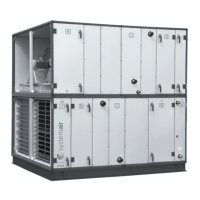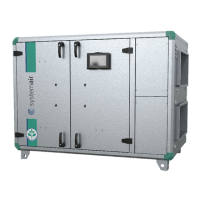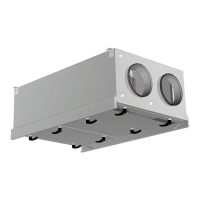erbindungen (Fig. 3)
Benutzen Sie Verbindungsstücke wie T-Stücke, Übergänge Bogen etc. mit Gummidichtung.
Sichern Sie die Verbindungen mit Blechtreibschrauben (3 Stck pro Verbindung) oder
Klebeband. Die Schiebeverbindungen der Zoom-Rohre müssen immer mit Klebeband
gesichert werden.
Schalldämpfer (Fig. 4)
Um Strömungsgeräusche in die Zimmer zu vermeiden, verwenden Sie Schalldämpfer (1) an
den Zu- und Abluftstutzen des Gerätes (Länge 1,0 m).
Um die Übertragung des Geräteschalles und des Telefonieschalles durch das Kanalsystem
zu vermeiden sind zusätzlich noch vor jedem Auslass Schalldämpfer vorzusehen. (Fig. 6).
Flexible Rohre (Fig. 4)
Flexible Rohre (2) können für die Verbindungen Gerät-Rohrsystem, Dachhaube-Rohrsystem
und am Aussengitter eingesetzt werden. Diese Verbindungen müssen auswechselbar sein.
Kondensbildung/Wärmedämmung (Fig. 5)
Frisch- und Fortluftkanäle müssen gegen Schwitzwasser isoliert werden. Dabei ist eine
Lückenlose Isolierung bis zum Gerät wichtig. Außerdem müssen alle, im Kaltbereich
verlegten Kanäle ebenfalls isoliert werden: 50mm Mineralwolle mit diffusionsdichter Hülle.
In Gegenden mit extrem niedrigen Außentemperaturen (< -15°C) sollten die Kanäle im
Kaltbereich noch zusätzlich isoliert werden. Gesamt-Isolierstärke: 100mm.
ACHTUNG! Isolieren Sie auch alle Verbindungen und kleben diese mit ab
Duct connections (Fig. 3)
Secure all joints between ducting and Tee-pieces, duct connectors, reducers etc. by means of
special tape or 3 pcs. self drilling screws per joint. Always tape the telescopic connections on
Villavent Zoom ducts.
Attenuation (Fig. 4)
To avoid fan noise being transferred to rooms, install sound attenuators (1) on connectors for
inlet air and extract air on the unit. (L = 1,0 m).
To avoid noise being transferred between rooms via the duct system and also to reduce noise
from the duct system itself, installation of sound attenuators before every inlet diffuser is
recommended. (Fig. 6).
Flexible ducting (Fig. 4)
Flexible ducting (2) to be used only for connections between the unit and roof unit / grill for
Outdoor air intake.
Condensation/heat insulation (Fig. 5)
Outdoor air duct and discharge ducts must always be well insulated against condensation.
Correct insulation installation on ducts connected to the unit is especially important. All duct
runs installed in cold rooms/areas must be well insulated. Use insulation sleeving (50 mm
mineral wool) with plastic diffusion barrier.
In areas with extremely low outdoor temperatures during the winter, additional insulation must
be installed. Total insulation thickness must be at least 100 mm.
NOTE! Make sure that all joints are covered with insulation, and tape well.

